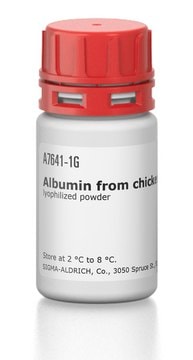FCMAB194F
Milli-Mark® Anti-CD38-FITC Antibody, clone AT13/5
clone AT13/5, Milli-Mark®, from mouse
Synonyme(s) :
ADP-ribosyl cyclase 1, Cyclic ADP-ribose hydrolase 1, cADPr hydrolase 1, T10
About This Item
Produits recommandés
Source biologique
mouse
Niveau de qualité
Conjugué
FITC conjugate
Forme d'anticorps
purified immunoglobulin
Type de produit anticorps
primary antibodies
Clone
AT13/5, monoclonal
Espèces réactives
human
Fabricant/nom de marque
Milli-Mark®
Technique(s)
flow cytometry: suitable
Isotype
IgG1κ
Numéro d'accès NCBI
Numéro d'accès UniProt
Conditions d'expédition
wet ice
Modification post-traductionnelle de la cible
unmodified
Informations sur le gène
human ... CD38(952)
Catégories apparentées
Description générale
Anti-CD38, AT13/5 was included in the Sixth International Workshop and Conference on Human Leucocyte Differentiation Antigens, and studies by a number of laboratories confirmed its reactivity with CD38 (Morra, 1997).
Spécificité
Immunogène
Application
Inflammation & Immunology
Immunoglobulins & Immunology
Qualité
Description de la cible
Forme physique
Stockage et stabilité
Remarque sur l'analyse
Human Lymphocytes
Informations légales
Clause de non-responsabilité
Vous ne trouvez pas le bon produit ?
Essayez notre Outil de sélection de produits.
Code de la classe de stockage
12 - Non Combustible Liquids
Classe de danger pour l'eau (WGK)
WGK 2
Point d'éclair (°F)
Not applicable
Point d'éclair (°C)
Not applicable
Certificats d'analyse (COA)
Recherchez un Certificats d'analyse (COA) en saisissant le numéro de lot du produit. Les numéros de lot figurent sur l'étiquette du produit après les mots "Lot" ou "Batch".
Déjà en possession de ce produit ?
Retrouvez la documentation relative aux produits que vous avez récemment achetés dans la Bibliothèque de documents.
Notre équipe de scientifiques dispose d'une expérience dans tous les secteurs de la recherche, notamment en sciences de la vie, science des matériaux, synthèse chimique, chromatographie, analyse et dans de nombreux autres domaines..
Contacter notre Service technique








